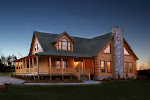

Which home would you rather live in? Ok, it's a trick question, they are the same home. If you were surfing the web for a new home, would you be drawn to one photo and not the other? Which one? (Please drop me a line and tell me why....) Two Salt Lake City agents have listed this home in the Capitol Hill area, one used the "bad" photo, the other the "good." I'm regularly suprised by how many so called professionals hurt their clients by not creating the right "picture" for the homebuyer. Make no mistake about how these "fluff" areas make a HUGE difference, especially in slow times like this. It's a shame to leave money on the table because of poor photos, bad staging, curb appeal etc...
The Los Angeles Times had a great post on photographing homes for the web. I have culled some of the best advice and added some of my own to create this list:
Use a tripod. It provides steadiness and allows you to operate your digital camera’s controls — specifically, shooting interiors at a slower speed.
Strive for even lighting. Professionals use strobe lights to brighten the dark spots. One of the mistakes that amateur photographers make is to shut all the blinds and turn on every artificial light in the room. This creates “halos” around each lamp. Don’t shoot when sunlight is streaming in from the windows. And use the flash on the camera to even things out.
Remove all clutter. Also remove all personal photos. The goal is to have potential buyers envision themselves living in your house; your family’s photos interfere with that process.
Wet down the brick patio and concrete pool surround to avoid it being too bright in the photo. Wetting it down also brings out the rich color in the brick.
Don’t be afraid of the shade. Gardens look richer when they aren’t shot in the blazing sun.
Leave no detail unattended. Tape the folds of the dining room tablecloth so it doesn’t pucker out. Position chairs uniformly (about 1 foot) from the table’s edge.
Shooting a pool presents special challenges because of the reflective nature of the water. Use a flash and try your shot in late afternoon or early morning.
Change the Perspective for exterior shots. If you shoot the home from the traditional front on shot, it is generic. Be creative and make the pictures memorable.
Consider using a software program such as Photoshop to touch things up. It is a way to eliminate telephone and electric wires. Ditto for punching up colors and obscuring some less desirable elements.
Tell a story. Your photo’s still may not win awards but the key thing is to create an impression that this house will be someones home. Remember the end in mind, the goal of every picture is to sell the home. Even if you use an outside photographer, tell them the idea’s you want to get across and the target market.
Best,
Matt


No comments:
Post a Comment